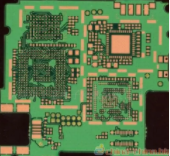The popularity of automotive electronics will promote the price increase of automotive PCB boards (printed circuit boards).
In recent years, the trend of car electrification and electronics is obvious
New energy vehicles and intelligent drive components will significantly increase the value of automotive PCBs. In recent years, the trend of automotive electrification and computerization has become more and more obvious. As the backbone of electronic products, PCB manufacturing is becoming more and more important in the automotive supply chain.
Compared with traditional fuel trucks, new energy vehicles have added charging, energy storage, power distribution and voltage conversion equipment, which will bring a large number of new applications to PCB boards. At the same time, although more than L4 autonomous driving cannot be mass-produced in a short time, the gradual penetration of various intelligent drive components will bring rapid development opportunities for high-end high-frequency PCB boards in automotive applications.

Large-scale PCB board application: new energy vehicles
According to our calculations, only in the field of powertrain and transmission, the cycle value of an electric car on the PCB board can reach 800 yuan, which is 20 times the value of the PCB board of a traditional car in this field.
The new demand for electric vehicles mainly comes from powertrain-related on-board charging equipment, battery management systems (BMS), voltage conversion systems (DC, inverters, etc.) and other high-voltage and low-voltage equipment.
New energy vehicles contain a large number of high-voltage, high-power devices, such as IGBTs, MOSFETs, etc., which have high requirements for heat dissipation, so that the PCB layout can not be too dense, and the number of PCB boards is further increased.
In each new energy vehicle, the total number of PCB boards required for the above types of equipment is about 0.78 square meters. The medium-sized fuel truck requires only about 0.43 square meters of PCB board for the entire vehicle.
In traditional fuel vehicle internal combustion engines and traditional systems, the number of PCB boards is very small, the total amount is only about 0.03 square meters.
Automotive millimeter wave radar is an important driving force to promote high-end PCB boards. In the intelligent driving device, the millimeter wave radar must be manufactured with high frequency PCBS.
The unit price of a high-frequency PCB is several times that of an ordinary PCB, and the value of a bicycle millimeter wave radar PCB can reach hundreds of yuan.
Automotive millimeter-wave radars mainly use two frequency bands, 24GHz and 77~79GHz, and the frequency is much higher than general circuit usage scenarios.
The characteristics of the high-frequency circuit determine the high-frequency PCB board-the key raw material requirements from the copper cladding layer to the PCB manufacturing link are much higher than that of the ordinary PCB board:
The transmission loss of the high-frequency circuit determines that a special substrate such as PTFE must be used for the copper-clad PCB.
The difficult processing of high-frequency copper cladding determines the high added value of high-frequency PCB processing links. The application of domestic millimeter wave radar continued to maintain a high growth in 2018, with a year-on-year increase of about 54%.
According to Zose industry research calculations, domestic millimeter wave radar shipments reached 3.58 million in the second half of 2018.
Generally, vehicles equipped with ADAS function need 2-7mm wave radar, so the domestically produced 2018 millimeter wave radar is equivalent to about 700,000 vehicles, and the penetration rate is about 3%. Among them, domestic 77GHz millimeter-wave radar shipments broke through 24GHz for the first time in 2018, becoming the mainstream.
And 77GHz has higher requirements on PCB due to its higher frequency.
Automotive PCB boards will increase prices far beyond the industry’s growth rate
According to our calculations, new energy vehicles equipped with millimeter-wave radar and large central control screens will consume 1.34 square meters of circulating PCBs, worth 1421 yuan, which is 3.8 times that of traditional fuel trucks that are not equipped with the above configuration.